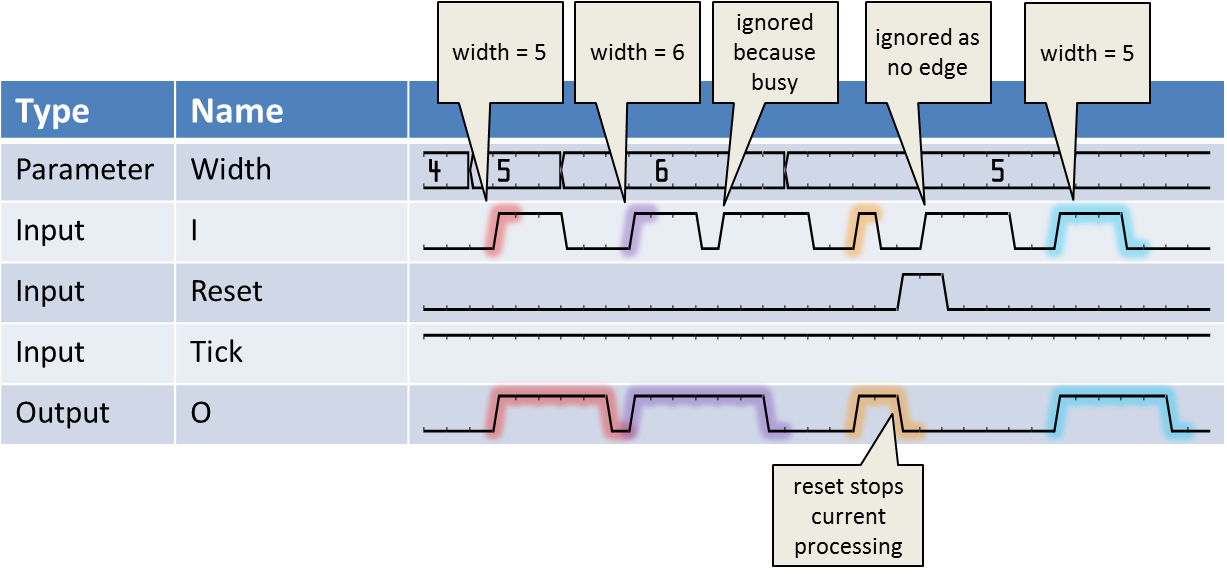Hello together,
What are 'ticks' in relation to the system clock and the signal library?
Especially in the signal library the word 'ticks' is mentioned pretty often and in the following you can find an explanation of it:
The system clock is used by the FPGA within each VA platform.
All current microEnable5 (mE5) boards use 125 MHz, while the older mE4 is found at 62.5 MHz.
A single tick represents a single pulse with the period of the used system clock:
Example for single tick duration:
system clock = S = 125 MHz
tick duration = T = 1 / S
1 / (125 MHz) = 8 nanoseconds (click for calculation)
1 second in ticks:
S = 125 MHz
1 second is represented by 125,000,000 = 125 million ticks
How to represent 1 ms in ticks?
duration = D = 1 ms (example value)
system clock = S = 125 MHz
tick duration = T = 1 / S = 1 / 125 MHz = 8 ns (see above)
D / T = amount of ticks representing D:
(1 millisecond) / (8 nanoseconds) = 125,000 ticks
In case of questions to this do not hesitate to place it below.
The community will answer as soon as possible...
Best regards,
